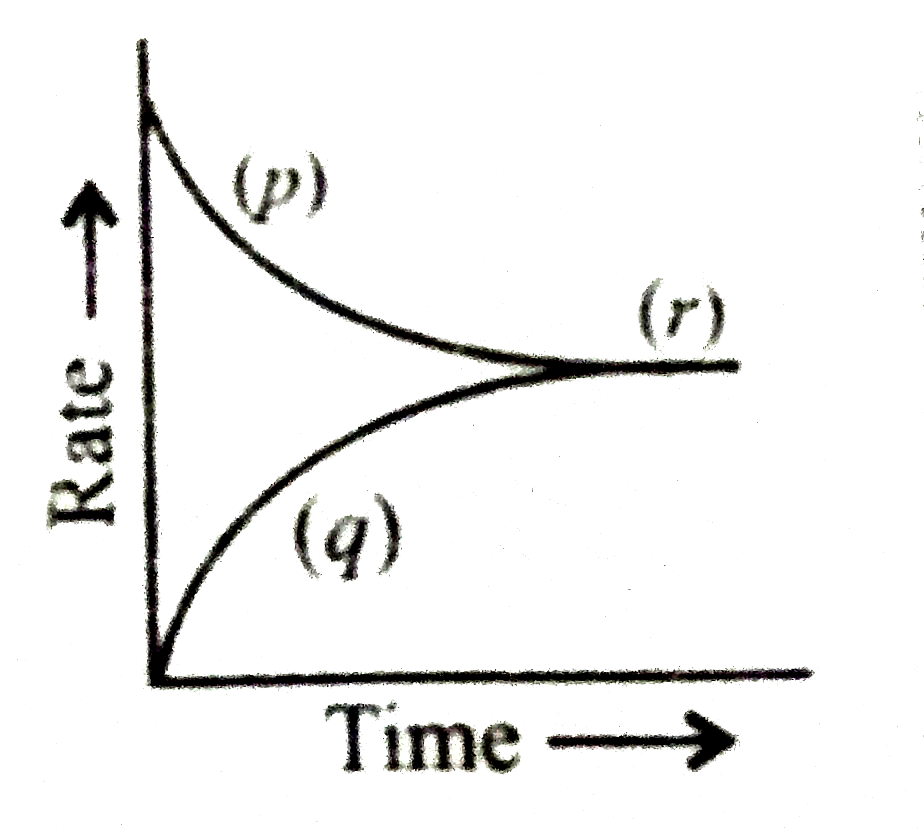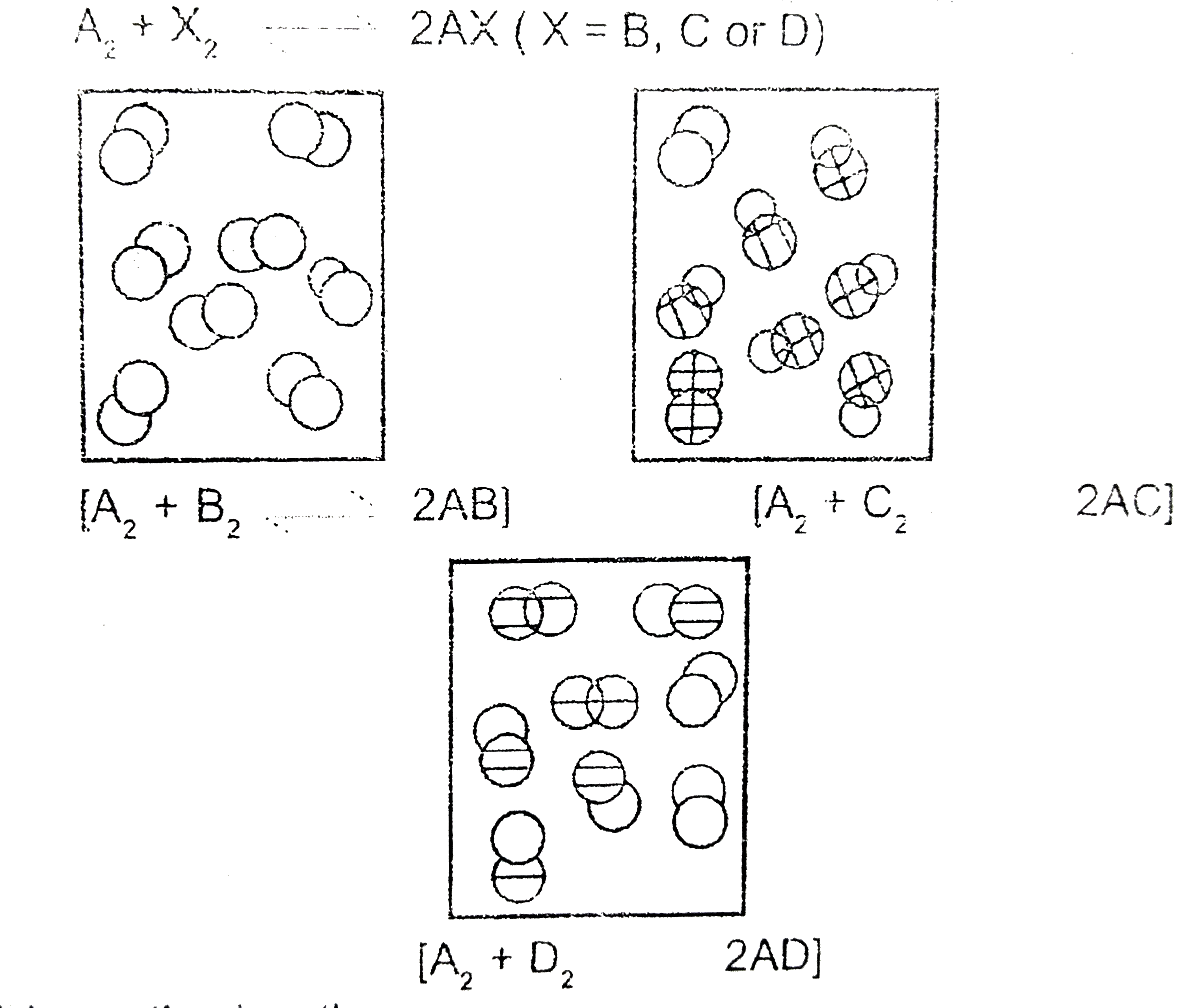In the reversible reaction of the type A+B⇔AB, in general.
neither of the reactions will be endothermic
both forward and backward reactions are exothermic
forward reactions will be exothermic
backward reaction will be exothermic
The correct Answer is:C
The process A+B→AB process with decrease in randomnes. Hence, it must be favoured if ΔH is −ve.
Topper's Solved these Questions
Similar Questions
Consider a general, single-step reaction of the type A+B⇔C. Show that the equilibrium constant is equal to the ratio of the rate constant for the forward and reverse reaction, Kc=kfkr
View SolutionThe value of reaction quotient Q of the following reversible reaction is equal to A(aq)↔ 2B(aq)+ C(aq)
3molL−1 2molL−1 4molL−1
View Solution
Knowledge Check
In reversible reactions
Aconcentration of reactants decreases with timeBconcentration of products increases with timeCconcentration of reactants decreases and then increases with timeDconcentration of reactants and products are constant at equilibriumIn the reversible reaction A + B ⇔ C + D, the concentration of each C and D at equilobrium was 0.8 mole/litre, then the equilibrium constant Kc will be
A6.4B0.64C1.6D16.0In a reversible reaction the rate of the backward reaction is
AnegativeBpositiveCcan be positive or negativeDNone of these
In a reversible reaction, the forward reaction was 3 times faster than that of reverse reaction. The reaction quotient is.....
View SolutionFor reversible reaction, A+B⇔C+D, the graph for rate of reaction with time is given below.
Mark the terms (p),(q) and (r )

View SolutionThe following pictures represents the equilibrium state for three different reactions of the type
A2+X2⇔2AX (X=B,CorD)

Which reaction has the largest equilibrium constant?
View SolutionUnit of equilibrium constant for the reversible reaction H2+I2⇔2HI is
View SolutionFor a general electrochemical reaction of the type
αA+bBne−⇐⇒cC+dD
Nernst equation can be written as
View Solution
